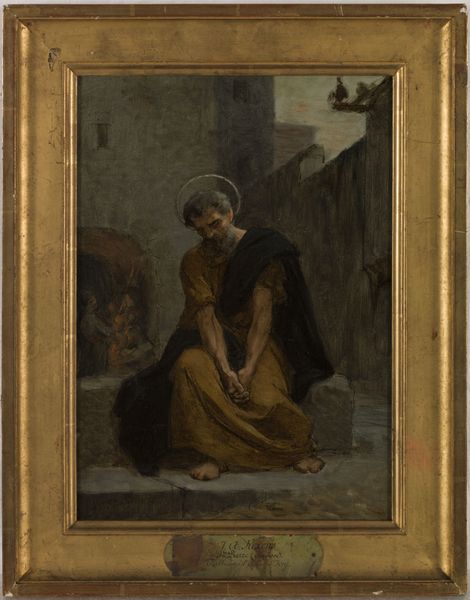
painting, oil-paint
#
portrait
#
painting
#
oil-paint
#
figuration
#
oil painting
#
earthy tone
#
underpainting
#
painting painterly
#
history-painting
#
academic-art
#
italian-renaissance
Dimensions: overall: 139.1 x 67.3 cm (54 3/4 x 26 1/2 in.) framed: 155.6 x 83.8 x 11.4 cm (61 1/4 x 33 x 4 1/2 in.)
Copyright: National Gallery of Art: CC0 1.0
Curator: Looking at Francesco Benaglio’s “Saint Jerome,” dating from around 1470 to 1475, rendered in oil paint, what strikes you first? Editor: The textures! Especially how rough and worn everything looks. And he's barefoot, so his poverty and humility are displayed materially as part of his being, literally grounding him. What does the medium itself say to you about this work? Curator: I find myself drawn to the economics and craft of its making. Oil paint during the Renaissance was not simply a neutral substance; it represented a new technology and the means of achieving particular aesthetic and economic ends. Who had access to these skills, what were they trying to display, and how does this material choice highlight Saint Jerome's social role? Look at the faux marble of the architectural structure; how does it contrast or coincide with Jerome's bare foot? Is that modesty or wealth he is performing? Editor: So, it's about how this new method, oil paint, connects to the artist's skills and its implications of wealth, versus this idea of humility being displayed. How interesting that what could simply signal status is much more complex! Curator: Precisely. The act of creating something that looks "worn" is itself a form of labor that needs considering; a luxury in disguise perhaps? Editor: It’s really interesting to consider art, and its message, in the context of who makes it, the skill and labor involved, and even the cost of the materials. Thanks for widening my perspective on this piece. Curator: And you’ve helped me reconsider how we often view materials – as simply "there" rather than a product of a whole economic system.
Comments
No comments
Be the first to comment and join the conversation on the ultimate creative platform.













